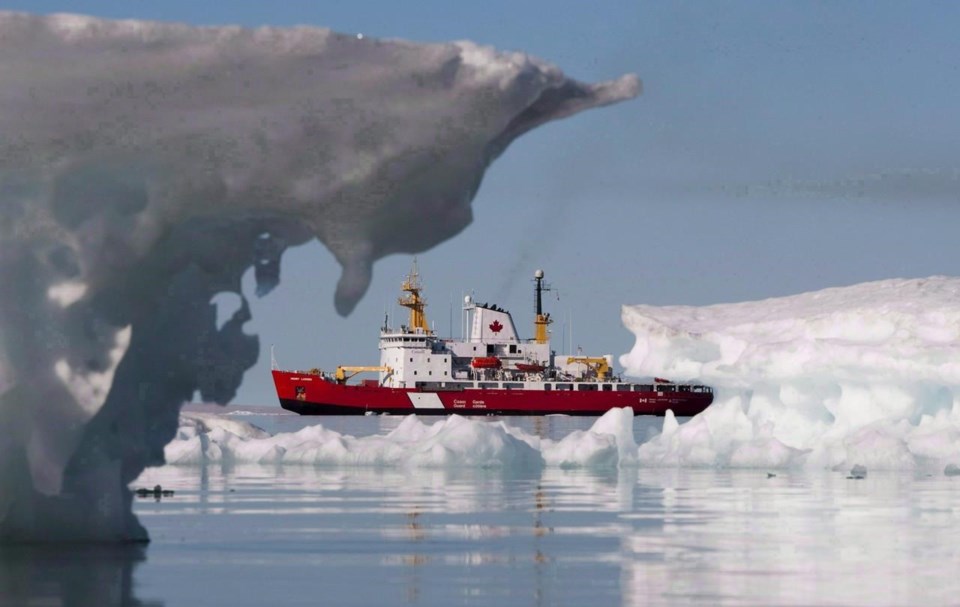New research has moved up the time by which the Arctic Ocean is predicted to be free of summer ice.
A paper published Tuesday in the journal Nature has concluded that those northern waters could be open for months at a time as early as 2030, even if humanity manages to drastically scale back its greenhouse gas emissions.
"It brings it about a decade sooner," said Nathan Gillett, an Environment and Climate Change ÎÚÑ»´«Ã½ scientist and one of the co-authors of the study.
Gillett and his colleagues had noticed the growing differences between what climate models say should be happening to sea ice and what's actually going on.
"The models, on average, underestimate sea ice decline compared with observations," Gillett said.
They wanted to know how much they'd have to tweak the model to make it fit the data — and what those tweaks might reveal if they were projected into the future.
To do so, the scientists first teased out the effect of greenhouse gases from other factors that affect sea ice loss, such as artificial chemicals from aerosols or natural events such as volcanic eruptions. The impact of aerosols was found to be negligible and the study concluded that natural events contributed no more than 10 per cent of sea ice loss.
With greenhouse gases isolated as the main culprit, they then looked at how those emissions were used in their climate model. By "scaling up" the effect of greenhouse gases, the researchers achieved a much better fit with satellite images of ice cover.
That more accurate assessment of the influence of greenhouses turned out to come with a warning.
Previous estimates had suggested that Arctic summer sea ice wouldn't disappear until the 2040s at the earliest. If humanity managed to bring its emissions down, year-round sea ice might even survive.
But once the model had been brought in line with what was happening on the water, predictions of summer ice disappearance got a lot closer.
"The range is then 2030 to 2050," Gillett said. "And even under the lowest emission scenario, with the scaling the Arctic is ice-free."
Nothing is certain, Gillett cautions. But this is close.
"I would say it's extremely likely."
That would mean that by the end of the melt season in September, the Arctic would have less than one million square kilometres of sea ice, even under low emissions. If emissions remain high, that ice-free period could last months.
The average ice extent for April 2023 was 14 million square kilometres.
As well, the study is the first to measure sea ice trends for every month of the year. Previous studies have focused on the summer months.
By comparing ice extent year-over-year — February 2019 against February 2018, for example — the data showed ice loss from climate change in every month of the year.
Pam Pearson of the International Cryosphere Climate Initiative, a network of policy experts and researchers, has seen the Nature study and said it's strong evidence that greenhouse gases are changing the Arctic faster than previously thought.
"More ice is being lost, faster than even the most recent models predict," she wrote in an email.
"Observations today outpace even high-end predictions. Global ice stores simply are more sensitive than we thought to slight changes in warming."
Gillett said an ice-free Arctic would certainly hasten the warming of lands around the waters — already warming at three times the global average. The fragile ecosystem that depends on sea ice — home to everything from algae to polar bears — would change utterly.
And when it comes to climate, what happens in the Arctic may not stay in the Arctic.
"People have looked at the possible implications of Arctic warming on the climate at lower latitudes," Gillett. "That's still a topic of debate."
This report by The Canadian Press was first published June 6, 2023.
— Follow Bob Weber on Twitter at @row1960
Bob Weber, The Canadian Press



